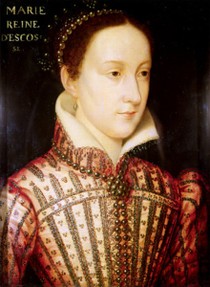Despite the age of consent being 14 in France, Francis was not allowed to reign. It seemed that his mother, Catherine de Merdici knew that her son would not be able to cope with being king. The government was placed in the hands of Mary’s House of Guise uncle, who were staunch supporters of the Catholic religion.
This could have been problematic for the country. The Protestants were starting to rise up, something that has been covered well so far in Reign. Francis was unable to control the uprising, which overshadowed the reigns of both his brothers who ended up taking the throne after him.
It did make sense to allow the House of Guise take over, though. Both of Mary’s uncles from that side of the family had good relationships with Henri. At first, Francis wanted his ministers to follow the orders of his mother, but she was still mourning the death of her husband and decided that it was best that they take orders from someone who would be able to give them clearly.
Francis, Duke of Guise, was one of the royal army’s most infamous commanders, while Charles, Cardinal of Lorraine, was great for negotiating on religious matters. The two brothers even split the duties well, with the duke taking the military command and the cardinal taking over diplomacy, justice and finance.


 Those who have seen Reign on the CW will not really know the full truth. The relationship between Francis and Mary was unlikely anything like the show has portrayed. To start with, Francis and Mary certainly didn’t speak with posh British accents. Both would have grown up with French accents as they were raised in the French court.
Those who have seen Reign on the CW will not really know the full truth. The relationship between Francis and Mary was unlikely anything like the show has portrayed. To start with, Francis and Mary certainly didn’t speak with posh British accents. Both would have grown up with French accents as they were raised in the French court.






 When Mary married Francis, she signed a secret pact. Scotland would become part of France if she died without an heir to the throne. Marie of Guise, Mary’s mother, used this relationship to her advantage when she was forced out of Edinburg by the Scottish lords congregation. In May 1559, Marie asked France for help, and troops were sent. Scotland was back in French control by the end of 1559.
When Mary married Francis, she signed a secret pact. Scotland would become part of France if she died without an heir to the throne. Marie of Guise, Mary’s mother, used this relationship to her advantage when she was forced out of Edinburg by the Scottish lords congregation. In May 1559, Marie asked France for help, and troops were sent. Scotland was back in French control by the end of 1559.


 Alternate History: What If Mary I Had a Child?on 01/26/2015
Alternate History: What If Mary I Had a Child?on 01/26/2015
 Does Writedge Pay? Payment Proofon 12/03/2014
Does Writedge Pay? Payment Proofon 12/03/2014
 Alternate History: What If Lady Jane Grey Was Not Deposed?on 11/11/2014
Alternate History: What If Lady Jane Grey Was Not Deposed?on 11/11/2014
 Alternate History: What If Edward VI Had Lived?on 11/06/2014
Alternate History: What If Edward VI Had Lived?on 11/06/2014



Comments
Royal marriages are tough, more tough are their lives. I could see how difficult Mary's life was with her husbands early death and the circumstances in France.